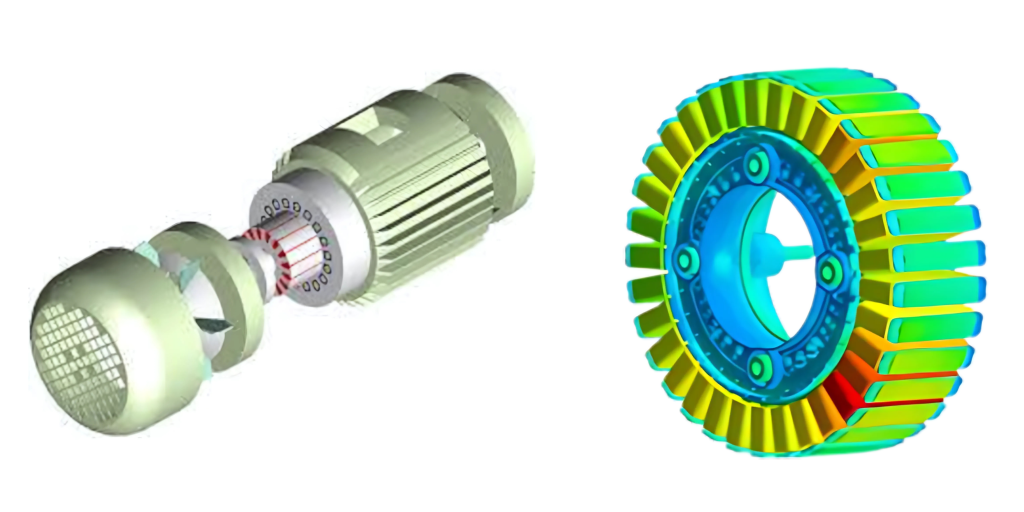Introduction
Electric motors are prone to heat generation during operation, and maintaining their performance and reliability necessitates efficient cooling. Computational Fluid Dynamics (CFD) offers a technical avenue to simulate and optimize the intricate airflow patterns and heat transfer mechanisms within electric motors.
Challenges
Crafting proficient cooling systems, refining heat transfer processes, discerning suitable materials, and curbing noise emissions are pivotal facets within diverse engineering applications.

Solution
A comprehensive solution was employed, starting with intricate 3D modeling and meshing for precision. We selected turbulence models judiciously, conducted a thorough conjugate heat transfer analysis, and utilized transient CFD simulations to capture dynamic temperature variations. Realistic boundary conditions were established to mimic real-world scenarios.
Benefits
Addressing the challenges of complex geometries, turbulent flow patterns, and transient dynamics enables the design of more efficient and dependable electric motor cooling systems. Ultimately, this enhances performance, prolongs lifespan, and reduces energy consumption, underlining the technological advancements in the realm of electric motor engineering.
